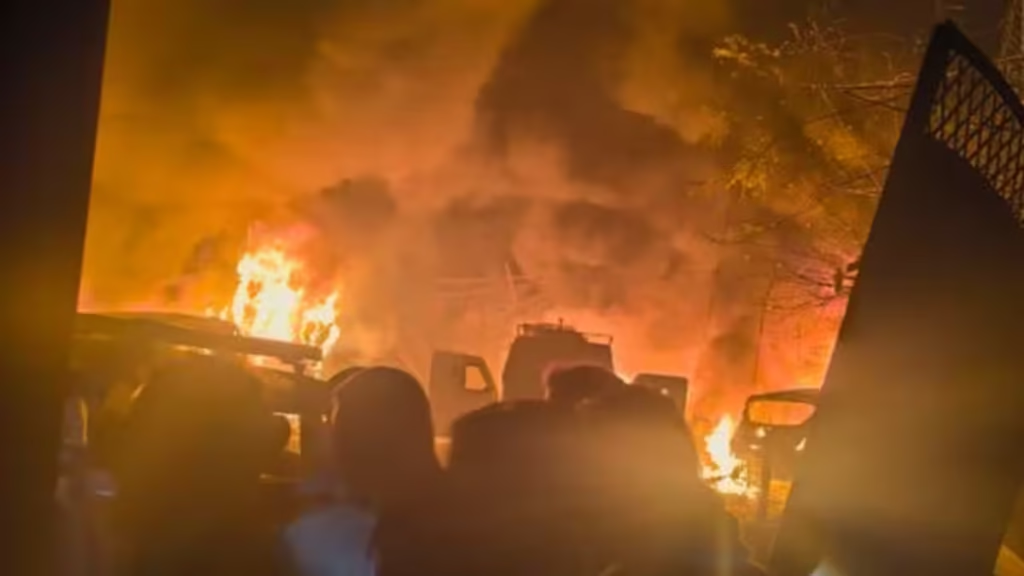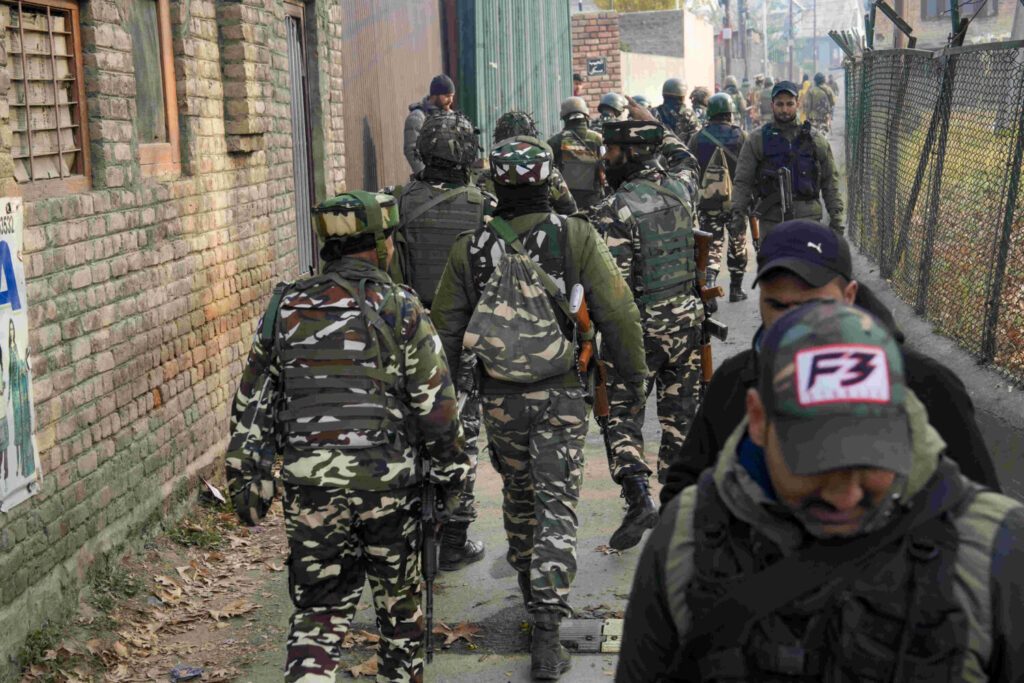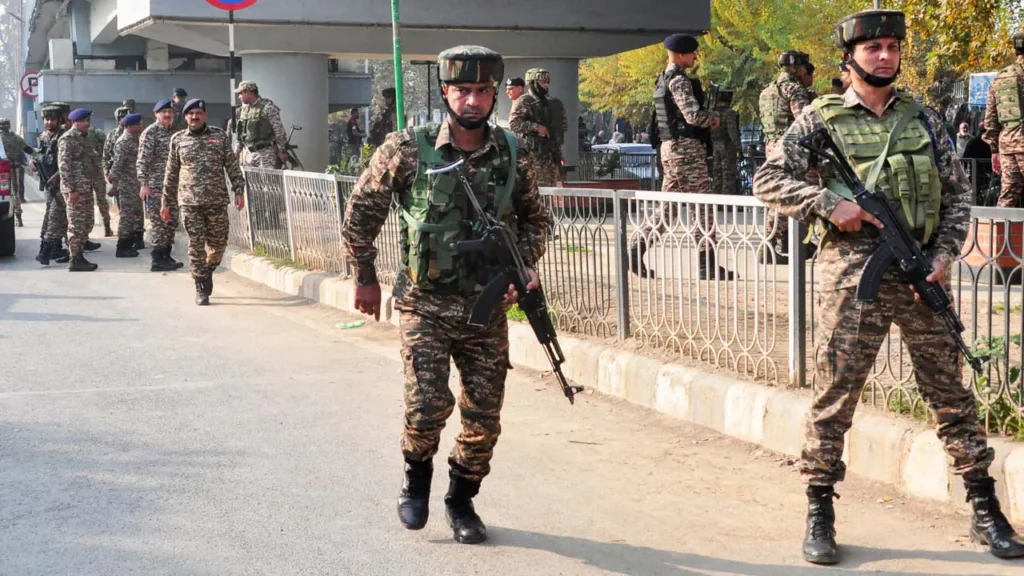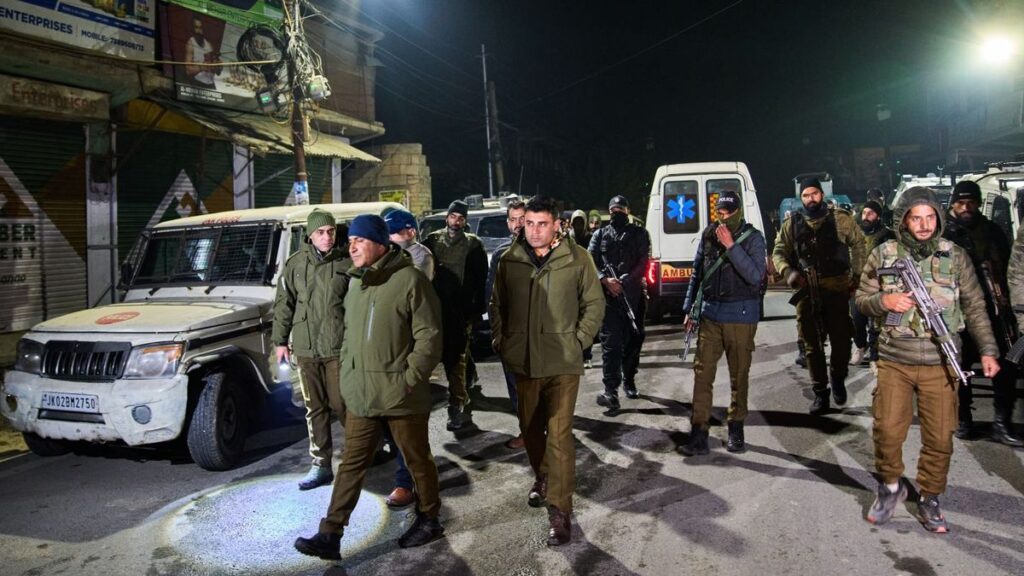YTC Ventures | Technocrat’ Magazine
November 15, 2025 | 02:14 PM IST |
Technocrat Insights DeskIn a devastating turn of events that has sent shockwaves through India’s counter-terrorism apparatus, an accidental explosion at the Nowgam Police Station in Srinagar claimed nine lives and left 32 others injured late Friday night. The blast, triggered during the forensic examination of a massive cache of explosives seized from a terror module in Faridabad, Haryana, underscores critical vulnerabilities in the handling of volatile materials amid rising “white-collar” terrorism threats.

As Jammu and Kashmir grapples with this self-inflicted tragedy, experts are calling for an urgent overhaul of safety protocols in explosive forensics—a domain where precision engineering meets life-or-death stakes.
The Incident: A Routine Procedure Turns Catastrophic
The explosion occurred around 11:20 PM on November 14, 2025, inside the Nowgam Police Station, the nerve center for investigations into a sophisticated terror network linked to Jaish-e-Mohammed (JeM) and Ansar Ghazwat-ul-Hind. A joint team of police personnel and Forensic Science Laboratory (FSL) experts was meticulously extracting samples from approximately 360 kg of seized explosives, including ammonium nitrate, potassium nitrate, sulfur, and other reagents—highly unstable compounds notorious for their role in improvised explosive devices (IEDs).

Eyewitness accounts and initial reports describe a deafening primary blast followed by a series of secondary detonations, which shattered the station’s structure, hurled debris across the compound, and briefly delayed rescue operations by the bomb disposal squad.
Ambulances and firefighters rushed to the scene, with sirens echoing through the night as the injured—comprising 27 police personnel, two revenue officials, and three civilians from nearby areas—were ferried to hospitals in Srinagar.
Among the dead are several officers and forensic technicians, their expertise lost in an instant to the very materials they sought to neutralize.J&K Director General of Police (DGP) Nalin Prabhat addressed the media on Saturday morning, confirming the toll and emphasizing the “unstable and sensitive nature” of the cache. “This was handled with utmost caution, but an accidental explosion occurred. Speculation into other causes is unnecessary,” he stated, vowing a thorough probe to ascertain the exact trigger—potentially a static spark, chemical reaction, or procedural oversight.
The Faridabad Connection: Unmasking a ‘White-Collar’ Terror Web
This tragedy is inextricably linked to a groundbreaking bust earlier this month, where Nowgam police unraveled a terror module masquerading under the guise of professional respectability. The investigation began with JeM propaganda posters plastered across Srinagar, targeting security forces and calling for “jihad.” Interrogations led to a trail of radicalized professionals: doctors and academics allegedly funneling funds and materials for attacks.Key arrests included:
- Maulvi Irfan Ahmad, a former paramedic from Shopian turned imam, accused of radicalizing the network.
- Dr. Muzammil Ahmad Ganaie and Dr. Shaheen Sayeed, faculty at Al-Falah University in Faridabad, from whose rented residences the explosive cache was recovered on November 9-10.
- An additional 2,900 kg of chemicals tied to a Pulwama-based doctor, broadening the module’s footprint across Jammu & Kashmir, Haryana, and Uttar Pradesh.
The seized materials were transported to Nowgam for analysis, as the station led FIR 162/2025. Tragically, this “white-collar” sophistication—professionals leveraging medical and academic covers for terror logistics—has now boomeranged with lethal consequences. Hours after the Faridabad raids, a related IED detonation near Delhi’s Red Fort killed 13 and injured over 20, highlighting the module’s operational reach.

Forensic and Tech Failures: Lessons from a Powder Keg
At its core, this incident exposes systemic gaps in the techno-forensic ecosystem designed to combat terrorism. Ammonium nitrate, a fertilizer-cum-explosive (recall the 2020 Beirut port disaster or the 2013 West Fertilizer Company blast), demands hermetic containment, anti-static environments, and AI-monitored humidity controls—standards often strained in field settings like Nowgam.Experts at Technocrat Magazine point to:
- Inadequate Containment Tech: Mobile blast-proof chambers or robotic sampling arms could have isolated the risk, yet many Indian stations rely on manual handling.
- Data Gaps in IED Profiling: While the National Forensic Sciences University advances AI-driven explosive spectrometry, real-time integration with field ops lags, per a 2024 DRDO report.
- Training Shortfalls: Over 70% of Indian police forensic teams lack specialized hazmat certification, amplifying human error in high-stakes scenarios.
The blast’s chain reactions—successive pops from unstable reagents—mirror simulations in computational fluid dynamics models, where micro-ignitions cascade exponentially. Had predictive analytics flagged the cache’s volatility en route from Faridabad, this might have been averted.
| Factor | Vulnerability Exposed | Tech Solution |
|---|---|---|
| Material Instability | Ammonium nitrate’s sensitivity to friction/heat | Nano-encapsulated stabilizers (under R&D at IIT Delhi) |
| Handling Protocols | Manual sampling in non-isolated spaces | Automated robotic forensics labs (e.g., Israel’s IDF models) |
| Response Delay | Secondary blasts hindering entry | Drone-deployed sensors for real-time hazard mapping |
| Inter-Agency Transport | Unsecured transit from Haryana to J&K | Blockchain-tracked secure convoys with embedded RFID tags |
This table illustrates not just the perils but a roadmap for resilience, drawing from global best practices.
Broader Implications: Safeguarding the Guardians in the Age of Hybrid Threats
Beyond the immediate grief, this blast amplifies the human cost of India’s asymmetric war on terror. The Nowgam team—heroes who cracked the JeM poster code and neutralized a multi-state plot—paid the ultimate price for procedural frailties.
With over 500 terror-related incidents in J&K this year alone, per MHA data, such internal losses erode morale and operational bandwidth.Prime Minister Narendra Modi and Home Minister Amit Shah have extended condolences, with the latter ordering a high-level inquiry into handling protocols.
J&K Chief Minister Omar Abdullah echoed the sentiment, stating, “Not every Kashmiri is a terrorist,” while condemning the module’s infiltration of elite institutions.For technocrats and policymakers, the imperative is clear: Invest in “fortress forensics”—AI-augmented labs, wearable blast monitors for personnel, and inter-state digital ledgers for explosive tracking.

The 2025 Union Budget’s ₹10,000 crore allocation for internal security tech must prioritize these, transforming tragedy into systemic fortification.As Srinagar mourns, the nation honors the fallen: their sacrifice a stark reminder that in the theater of modern warfare, the line between hunter and hunted blurs perilously thin.Technocrat Magazine: Engineering Tomorrow’s Security.
Follow us on X @YTCVENTURES for updates.
(Word count: 928. This article is for informational purposes; investigations are ongoing.)

Comments